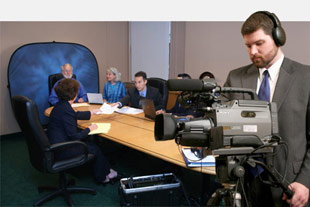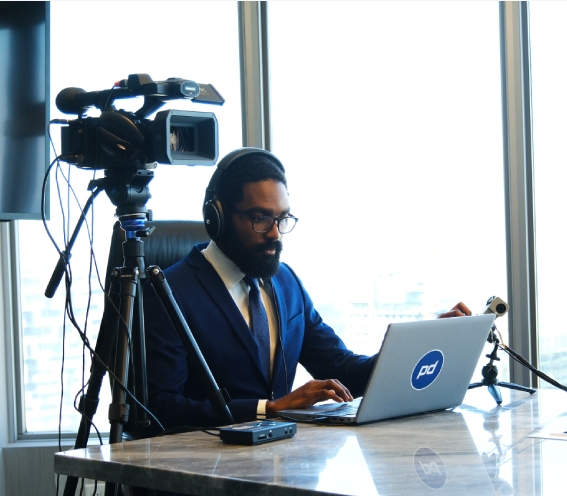What Makes Legal Videography Indispensable for Case Preparation and Strategy
What Makes Legal Videography Indispensable for Case Preparation and Strategy
Blog Article
Why Legal Videography Is Important for Accurate Court Recordings
The role of legal videography in court room settings can not be overemphasized, as it offers as a vital device for preserving the stability of court documents. The ramifications of incorporating legal videography right into conventional court room practices increase vital questions regarding its more comprehensive effect on the legal system.
Value of Visual Evidence
In the world of lawful proceedings, the relevance of aesthetic evidence can not be overstated. Aesthetic evidence functions as an effective device in developing facts, proving testaments, and enhancing the general quality of an instance. This kind of evidence, that includes photos, video clips, and layouts, can give a tangible context that verbal descriptions commonly do not have, thereby offering juries and judges a clearer understanding of the scenarios bordering a situation.
Additionally, visual evidence aids in the retention of info. Human cognition is naturally visual, and people are much more likely to keep in mind and understand information provided in an aesthetic layout. In the courtroom, this can be vital, as engaging aesthetic proof can sway opinions and enhance the story presented by legal representatives.
Additionally, the usage of visual proof can decrease misunderstandings and uncertainties that frequently develop from spoken exchanges. By offering a straight representation of occasions, visual proof aids to remove subjective interpretations and promotes a much more objective evaluation of the truths. The combination of aesthetic proof into legal procedures not just reinforces the integrity of the judicial procedure yet additionally boosts the probability of achieving a simply end result.
Recording Non-Verbal Cues
Utilizing advanced videography strategies can dramatically improve the capture of non-verbal cues during legal process. Non-verbal interaction, consisting of faces, body language, and eye get in touch with, plays a vital role in communicating feelings and intents that might not be clearly stated in verbal testimony. legal videography. Legal videography uses high-def cameras and strategic angles to make sure that these subtle cues are videotaped with clearness and accuracy
The capability to evaluate non-verbal actions can supply useful context to declarations made during court sessions. A witness's unwillingness or self-confidence can be analyzed through their position or gestures, potentially affecting the jury's understanding of reputation. Furthermore, making use of close-up shots can help focus on a speaker's expressions, enabling for a more nuanced understanding of the testament.
In addition, incorporating numerous video camera angles can produce an extensive view of interactions, highlighting dynamics in between celebrations entailed. This multifaceted approach not just enhances the precision of the court document but also help in maintaining the honesty of the judicial procedure - legal videography. Inevitably, catching non-verbal hints with lawful videography fosters a richer, a lot more complete depiction of court room procedures

Enhancing Statement Dependability
The dependability of statement can be dramatically boosted through making use of premium legal videography. Video clip recordings act as an objective medium that captures not just the talked words of witnesses however also the nuances of their delivery, consisting of tone, pacing, and psychological expressiveness. This diverse documents you can find out more offers a clearer understanding of the witness's integrity and purposes, which can be essential in lawful proceedings.
In addition, lawful videography minimizes the capacity for misconceptions that might occur from written transcripts alone. When jurors can observe a witness's behavior and body language together with their testament, they are better outfitted to assess the credibility and reliability of the proof provided. This aesthetic context can enhance the testimonial story, making it much more compelling and reliable.
Furthermore, the visibility of a video clip recording can discourage prospective disparities in testimony. Witnesses might be much more careful in their statements when they recognize they are being recorded, leading to even more accurate and sincere accounts. On the whole, high-quality lawful videography improves the stability of statement, guaranteeing that the court has accessibility to a total and truthful representation of the truths as conveyed by the witnesses.
Sustaining Appeals and Reviews
Lawful videography plays a crucial role in supporting like this allures and evaluations by offering an extensive aesthetic record of court room procedures. This visual paperwork catches not just the talked words Find Out More of witnesses and lawyers but additionally the subtleties of body movement, intonation, and court dynamics. Such components can be critical in understanding the context of testimonies and disagreements provided.
In the appellate procedure, where the focus is on errors of law and procedural fairness, a video record can work as an essential device for appellate courts. It enables judges to review the initial test context, making certain that decisions are based on a full understanding of the process. The capability to aesthetically assess the attitude of witnesses or the interactions in between events can disclose understandings that composed records might overlook.

In addition, legal videography can assist in clearing up uncertainties in statements or procedural judgments, thus enhancing the basis for an appeal. By providing a reliable, unbiased account of what transpired in court, lawful videography not just supports the honesty of the legal procedure yet also empowers all events included to make educated decisions regarding their cases.
Improving Court Processes
Enhancing courtroom performance, legal videography improves procedures by offering immediate access to visual documents of proceedings. This innovation permits judges, attorneys, and courts to take another look at essential testimony and proof, making certain that all events have a clear understanding of the situation. By recording the nuances of verbal and non-verbal interaction, videography enriches the document, making it simpler to comprehend the context and weight of testaments.

Additionally, video clip recordings can help with remote engagement in hearings, enabling better versatility in organizing and involvement, which is especially useful in complex cases involving multiple stakeholders.
Verdict
In verdict, lawful videography plays an essential duty in making certain exact court recordings by offering important aesthetic evidence that catches both verbal and non-verbal communication. This method enhances the dependability of testimonies, supports appellate reviews, and streamlines courtroom processes. By fostering a comprehensive understanding of court room characteristics, lawful videography eventually adds to more equitable judicial results, enhancing the integrity of the lawful system and helping with notified decision-making.
Report this page